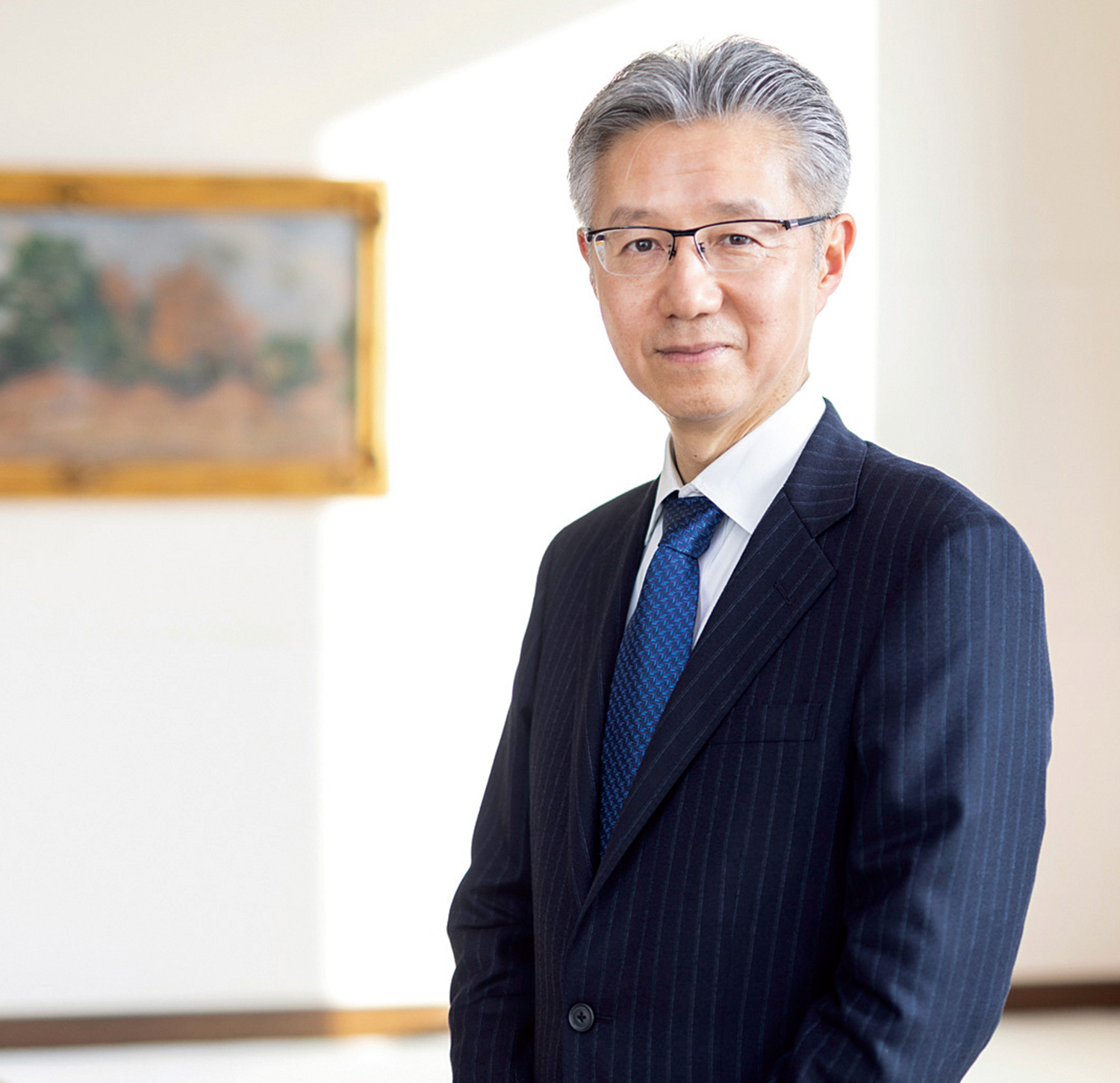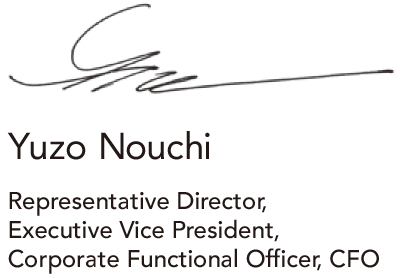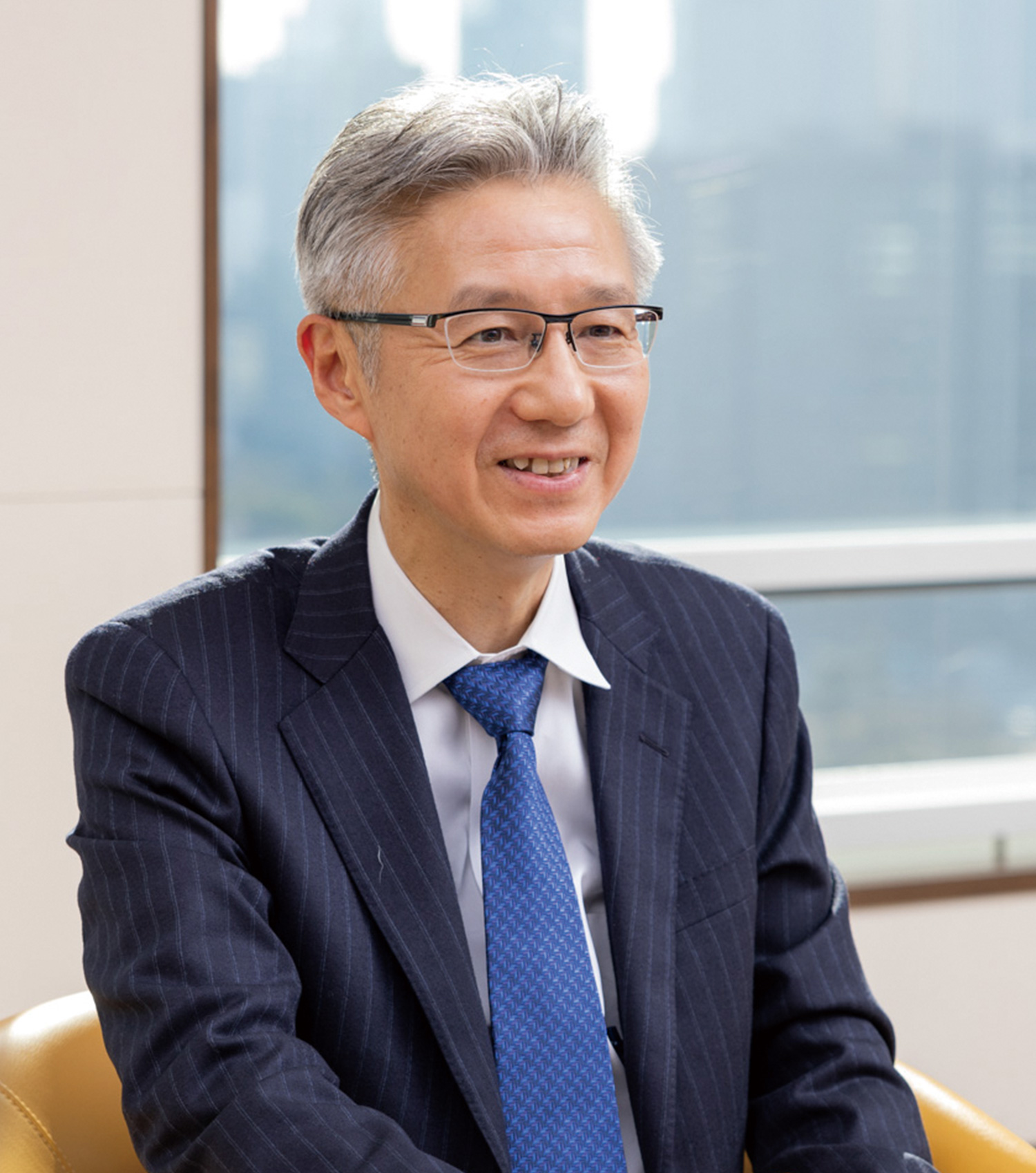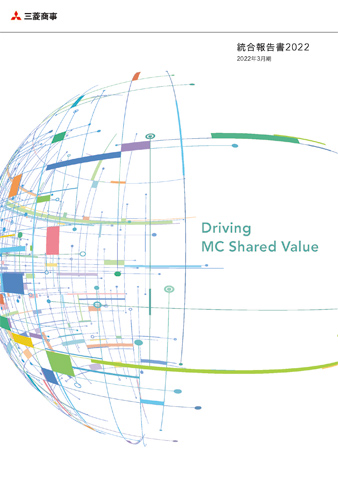Integrated Report 2022PDF List
Index
-
【Introduction】 (PDF:2.2MB)
Index/Editorial Policy/Corporate Philosophy/Message from the President and CEO (PDF:985KB)/Midterm Corporate Strategy 2024/Special Feature Creating a New Future(Fostering New Industries/Regional Revitalization)/Review of Midterm Corporate Strategy 2021
-
【The Value Creation Story】 (PDF:3MB)
Path of Value Creation/Value Creation Process/The Six Capitals/Focus Human Capital—The Source of Value Creation/Materiality/Focus Climate Change—Materiality Forming the Basis of EX Strategy/Message from the CAO (Chief Administrative Officer)/Message from the CFO
-
【Value Creation by the Business Groups】 (PDF:2.7MB)
Business Groups at a Glance/Business Groups × Business Models
-
【Initiatives and Systems Supporting Sustainable Value Creation】 (PDF:2.8MB)
Sustainability Promotion Framework/Risk Management/Corporate Governance
-
【Data Section】 (PDF:2MB)
Directors and Audit & Supervisory Board Members/Executive Officers/Shareholder Information/Organizational Structure/Global Network(Countries and Regions)/Balance of Risk Money Outstanding in 13 Countries/Financial Highlights/Equity in Earnings of Subsidiaries and Affiliates/ESG Data/Corporate Information



Message from the CFO
Appropriate capital allocation
for sustainable enhancement
of corporate value

Reviewing the Final Year of Midterm Corporate Strategy 2021
Strong Financial Results with Record-High Net Income in the Final Year,
Giving Midterm Corporate Strategy 2024 a Good Starter
Consolidated net income for the fiscal year ended March 31, 2022, was 937.5 billion yen, an increase of 764.9 billion yen from the previous fiscal year, a new record high. Seven of the ten segments showed new record high profits. This was, not only driven by the preferable performance of the resource prices, but also a result of effort that each business segment, represented by automobile-related and salmon and trout farming businesses, has seized various opportunities under the global economic recovery and grown its profit steadily throughout the year. While standing at a record high, in preparation for growing uncertainty of our business environment, we have also recognized potential losses as much as possible in advance, reviewing assets’ value more closely. Although market conditions provided a tailwind in the fiscal year ended March 31, 2022, we made steady progress in strengthening the balance sheet and ensuring its soundness by liquidating unprofitable businesses and making provisions for losses, which has provided Midterm Corporate Strategy 2024 a good starter.
Reviewing Midterm Corporate Strategy 2021,
to Develop Midterm Corporate Strategy 2024
Although consolidated net income for the fiscal year ended March 31, 2022, the final year of the previous Midterm Corporate Strategy, exceeded our target of 900 billion yen, new investments did not proceed as initially expected. This was due to the need to prioritize the maintenance and improvement of our financial soundness in response to major environmental changes caused by the spread of COVID-19. Investments were executed in diligently selected projects, resulting in an outlay of 2.5 trillion yen, compared to the initial plan of 3.4 trillion yen. Cash collection through divestments was also accelerated and amounted to 1.5 trillion yen, compared to the initial plan of 0.7 trillion yen. As a result, as of the end of March 2022, Investment-Leverage Ratio, an indicator of financial soundness, improved to 41%*, where the appropriate range is supposed to be from 40% to 50%. We believe it’s a level of financial soundness appropriate for the start of Midterm Corporate Strategy 2024.
Then, reviewing shareholder returns, under our Progressive Dividend Scheme, we paid per-share dividends of 132 yen, 134 yen, and 150 yen, respectively, for fiscal years ended March 31, 2020, 2021, and 2022. Combining the dividend and the 70 billion yen of share buyback announced in the final year of the plan, the total return for the three-year period reached 42%. While financial performance deteriorated significantly in the fiscal year ended March 31, 2021, we received significant positive feedback from the market for maintaining the Progressive Dividend Scheme as promised and sustaining the stock price. The Progressive Dividend Scheme is also reflected in the capital allocation policy of Midterm Corporate Strategy 2024.


Toward Sustainable Growth of Total Shareholder Returns
Capital Allocation Balancing Financial Soundness and Improvement of Capital Efficiency is Key
As CFO, I believe one of my key responsibilities is to control cash flows (CF) and capital allocation. Simply put, this concerns investments and shareholders return. In order to sustainably increase total shareholder return (TSR), it is necessary to both maintain financial soundness and improve capital efficiency, and I believe that the well-balanced allocation of capital, such as investments, asset replacements and returns, is the means to achieve this.
Explaining with exact numbers, during Midterm Corporate Strategy 2024, out of the 4.5 trillion yen to be generated from operating CF and CF from divestment, we intend to invest 3 trillion yen in maintaining and expanding our earnings base as well as in EX, DX, and growth investment-related and other areas, while distributing at least 700 billion yen to shareholders.
Regarding investment, our policy is to accelerate investment in EX-related fields, and although we have allocated 1.2 trillion yen out of a 3 trillion yen investment quota, this is by no means seeking for opportunities to fill out the given quota. The reality is far from it. 1.2 trillion yen is not sufficient to carry out all of the longlisted projects each business department wishes and registers. This means we need to carefully shortlist projects among the candidates, we then carefully scrutinize each project by looking at ROIC and other factors, bracing our investment discipline. In addition, since some EX-related projects require a relatively longer time to be on revenue stream, we believe it is necessary to make well-balanced investments to maintain and expand the existing revenue and profit base, which can be expected to proceed cash in a relatively short time frame.
The shareholder return of 700 billion yen or more is calculated from a lower limit based on the dividend forecast of 150 yen for the fiscal year ending March 31, 2023, as the Progressive Dividend Scheme of increasing dividends in line with sustained profit growth will continue for the three years of Midterm Corporate Strategy 2024.
While increasing value and maximizing ROE is the top priority of a company, we will also emphasize dialogue with the market to ensure that we meet shareholder expectations in terms of shareholders return. The Progressive Dividend Scheme under Midterm Corporate Strategy 2021 has been well received, but it is difficult to always meet the market’s expectations only with the Scheme, where a certain degree of fluctuation in business performance due to movements in commodity markets is expected. With this in mind, in Midterm Corporate Strategy 2024, we introduced a capital policy of maintaining progressive dividends while meeting market expectations in terms of total payout ratio, in combination with flexible company share buybacks.

Creating MC Shared Value
In Midterm Corporate Strategy 2024, we set forth a policy of continuously creating MC Shared Value by elevating the MC Group’s collective capabilities in order to address societal challenges. To some, addressing societal challenges may sounds idealistic, but we are now in an era in which sustainable economic value cannot be realized without the accompanying societal and environmental value. It is the basic structure of business to create value first, then earn profits by providing value and that a business will not last if there is an imbalance in the value provided and the profits earned. I would say this is what everyone understands firsthand. As the world becomes more complex, I understand that this structure is not limited to the relation between sellers and buyers, but has been extended to include a variety of stakeholders. We have firmly demonstrated our strengths through our connections with many stakeholders in areas that overlap with the needs of society, such as the supply of energy, metal resources, and food, as well as the overseas development of our business. We believe that we can continue to achieve sustainable growth together with society by addressing changing societal challenges.
Message
I have had a wide range of experiences since joining MC 35 years ago. My first job involved foreign exchange deals and my career has largely been centered on financial and accounting operations ever since. I’ve also had the opportunity to work abroad in Hong Kong and the US. I was assigned to new positions roughly every five years, and each time, I made a point of doing my best to tackle the new challenges before me. Looking back, I can see how the various stops along my career were interconnected. I feel like I was able to keep developing as a business professional by working hard to do what needed to be done with each new opportunity, and all of these experiences help to fuel my efforts today.
Over the past four years, I have been involved in companywide management as GM of MC’s Corporate Accounting Department. This has given me a greater awareness of our various stakeholders, especially our shareholders, and the high expectations they have for the MC Group. While they hope to see these expectations materialize in different ways, such as through short-term dividends, long-term growth or the strengthening of our brand, the overarching objective comes down to increasing corporate value. I do not believe that the current share price fully reflects the intrinsic value of the company. While improving capital efficiency is essential, we are also aware of the challenges regarding the cost of equity. While there are various definitions of the capital cost, I feel, for example, that one of them, the inverse of price-to-earnings ratio (1/PER), is much higher than the cost of capital calculated by the Capital Asset Pricing Model and other theoretical methods. One of the reasons for this may be foreseeability of sustainable profit level.
Our business model is often said to be difficult to understand, but through dialogue and communication with the stock market, we would like to explore effective ways to reduce the cost of equity.

